There’s no place like home row,Watch An Enticing Invitation Online am I right? “ASDF" and "JKL:” aren’t just the keys our fingers rest upon, they’re our friends. Fine, that may be a bit much, but we have all undoubtedly come a long way from typing our very first letters. In my earliest days of typing, the keyboard setup was confusing and random despite all the fun games on my Typing InstructorCD-ROM.
Eventually, navigating the layout became second nature, and here I am today, typing at reckless speeds without so much as needing to look down. Seven-year-old Devin would be quite impressed. It’s probably safe to say that many of us don’t know much about what lies beyond the standard QWERTY keyboard. But there’s so much more. So much.
Let’s take a look at some popular and regional keyboard layouts. They probably won’t have you switching anytime soon, but it’s worth a peek. The more you know, and all that.

Note: This feature was originally published on June 2016. We have bumped it as part of our #ThrowbackThursday initiative.
Don’t go looking for "Dvorak" spelled out on the layout like I did - it’s the name of the guy who patented it in 1936, August Dvorak. He felt that QWERTY was a pain to use and developed his layout to be more efficient.
Studies seem to agree and maybe that’s because when using Dvorak, 70 percent of strokes are on home row (vs. 32 percent when using QWERTY.)
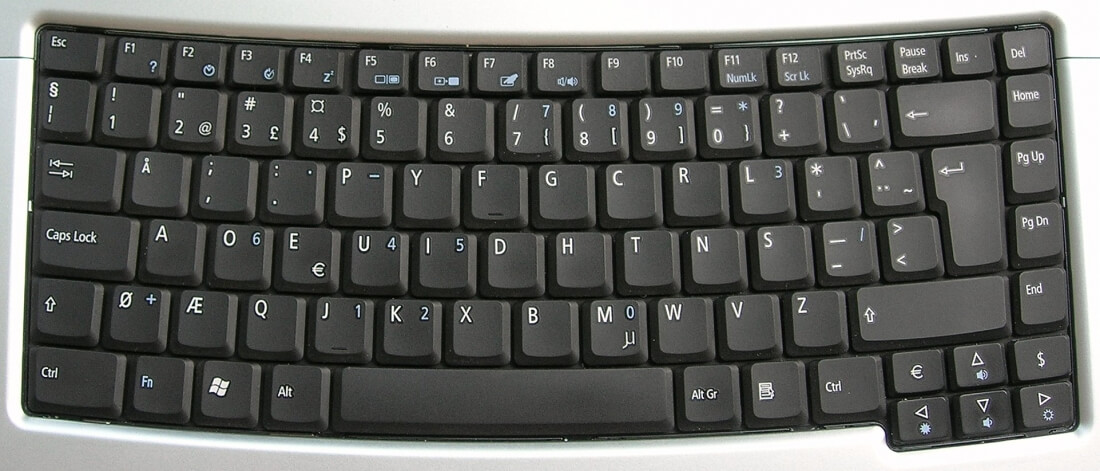
When using Dvorak, you’ll notice that more than half of your strokes are with the right hand. Dvorak did this on purpose, based on the fact that most people are right handed. Interesting note (at least to nerdy writers): All the vowels are in home row.
Colemak could be considered QWERTY-lite. There are only 17 differences in key layout between the two, plus a second backspace key replacing the Caps Lock key. Colemak is a combination of Coleman (the last name of the creator) and Dvorak.
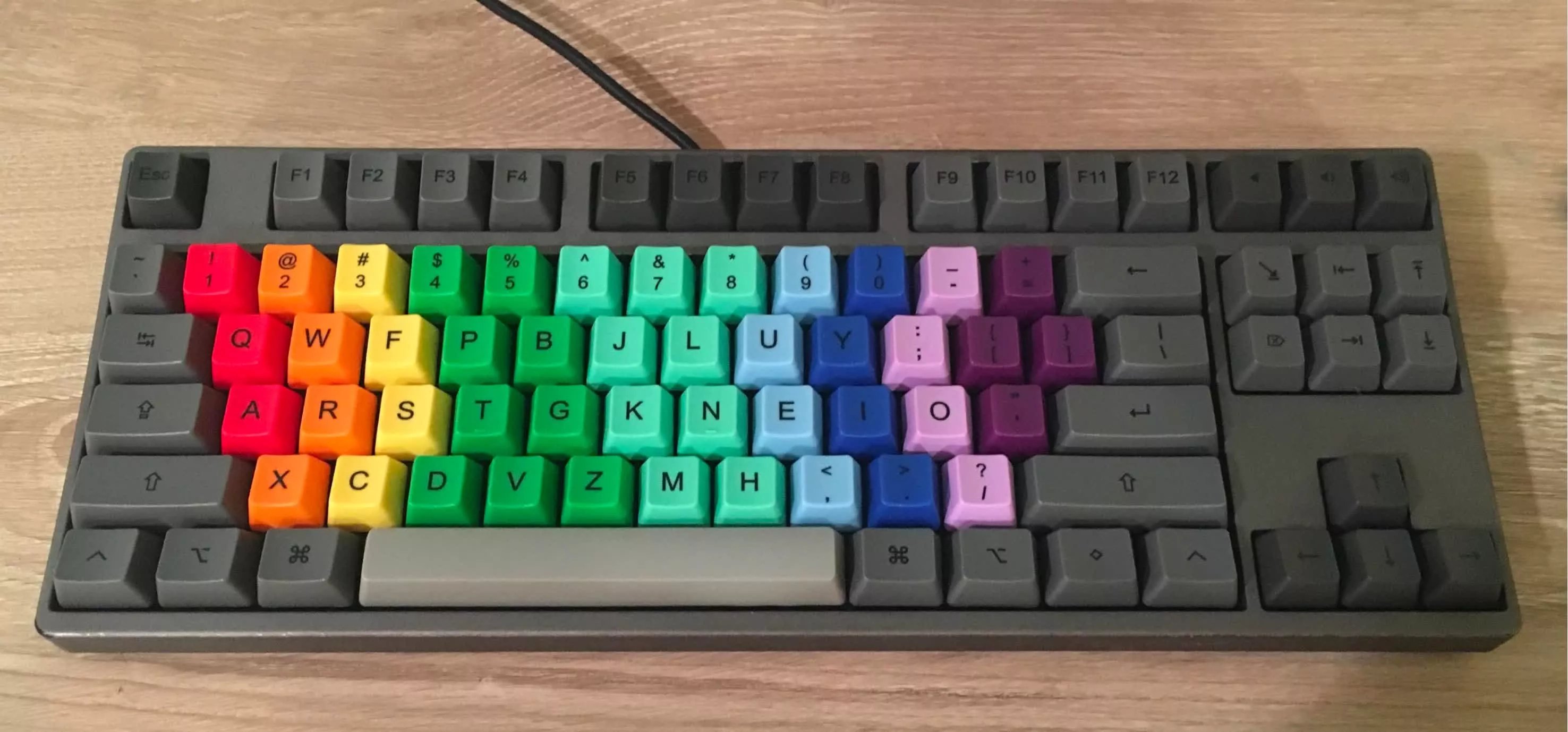
The layout clearly isn’t just a revamp of Dvorak, though, it’s an attempt to fix issues with Dvorak while not intimidating QWERTY users. Looking at the Colemak layout as a QWERTY typist, it’s easier to imagine switching over than if you were looking at Dvorak.
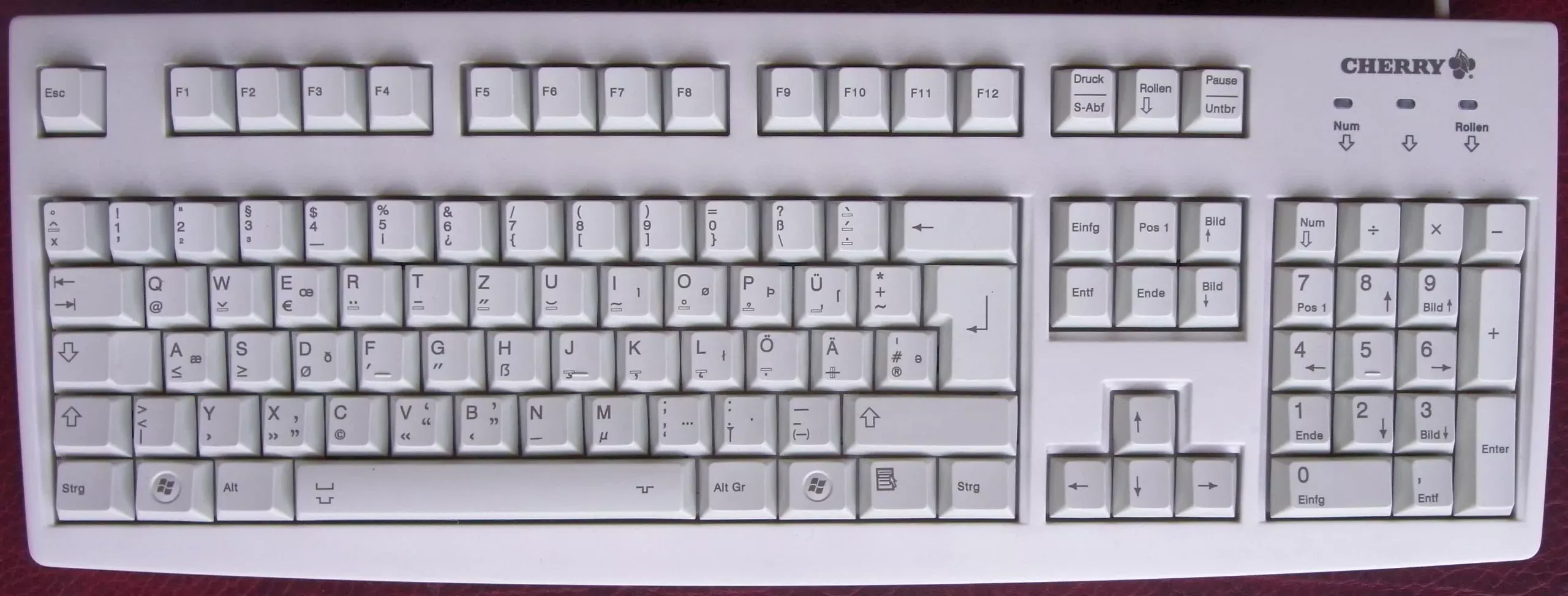
Once you go down the rabbit hole of keyboard layouts, it becomes pretty clear that QWERTY has a strong hold on a lot of the world. For example, QWERTZ is a slight adaptation commonly used in central Europe (Germany, Austria, the Czech Republic, and other nearby nations.) The Z and Y keys are switched for two reasons. First, because Z is used much more than Y in German. Second, T and Z are used together so much it makes sense for T and Z to be side-by-side. You can also find umlauted vowels (ä, ö, ü) on this layout and there’s an Alt Gr key to access a third level of key assignation.
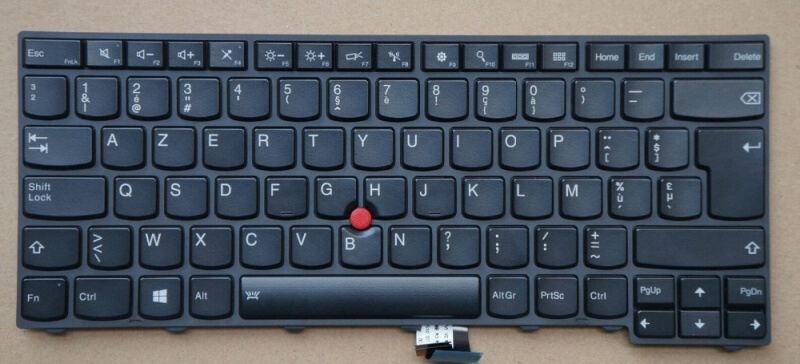
Here’s another example of an almost-QWERTY layout. This one is used by most French-speaking countries, though France and Belgium each have their own national variations on the layout, and not everyone likes it. Q swaps with A and W with Z in the top row. The semicolon is switched for the M key. If I were to sit down at an AZERTY keyboard, the biggest change would be that the number row function is changed.

Now let’s visit a galaxy far, far away from QWERTY. The Maltron keyboard looks uh.. unusual, but it’s designed with ergonomics in mind – so it might ease your aching hands and sore wrists. The keyboard is separated in chunks, with the numbers in the middle. The left-hand square of letters has ANISF for home row, and the right-hand square’s home row is DTHOR. The company behind this unusual keyboard, PCD Maltron, started in 1977 as a response to issues with the QWERTY layout and has found some fervent supporters.
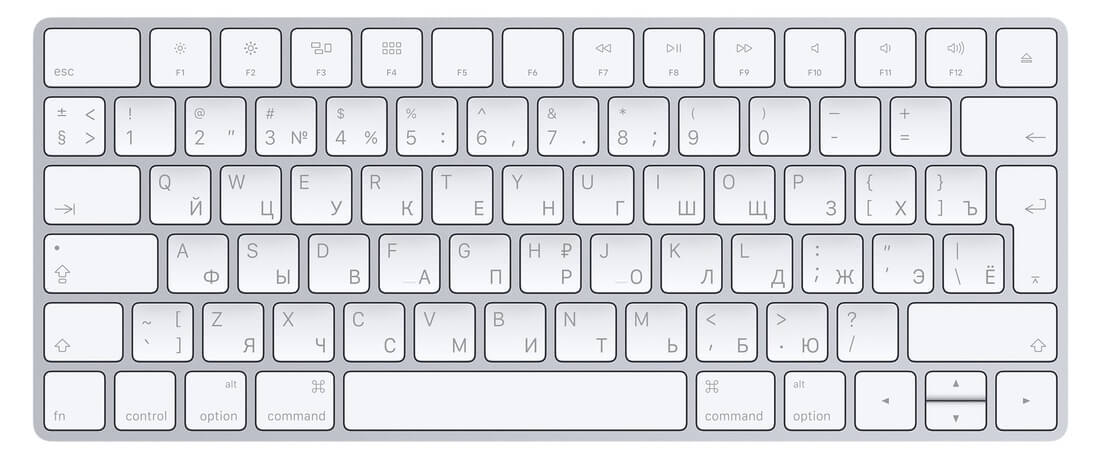
So what about countries where the alphabet is completely different from the Latin-based English alphabet?
In Russia, the Cyrillic alphabet is used, and since 1917 (when Russia reformed its alphabet to remove some letters), JCUKEN (also known as YCUKEN, YTsUKEN and JTSUKEN) has served as the default keyboard layout. The regular QWERTY layout is maintained as a secondary function in the same keyboard as shown on the photo above.
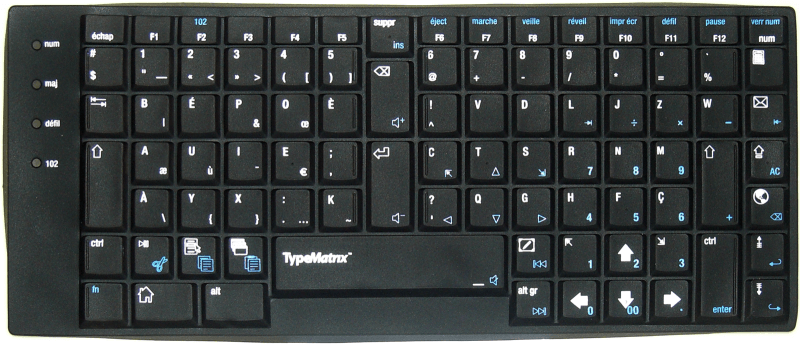
Let’s look at another French keyboard. The BÉPO layout is designed to ease programming and boost efficiency (similar to Dvorak.) This particular arrangement is based on statistical study of the French language. People say typing with BÉPO is easier because the keys used most often are on the home row. BÉPO has a lot of other characters that are missing from the AZERTY layout, including:

Looking up this keyboard layout lead me to the most interesting (and the first) article I’ve ever read about Turkish typewriters. QWERTY keyboards are very common in Turkey, but in 1955, the Turkish F-keyboard was invented to make typing the local language more efficient.
Think about it this way: “Just look at Scrabble: every language carefully assigns a different value to each letter, and puts a certain number of each tiles in the bag. Playing Scrabble in Romania with English tiles wouldn’t make a lot of sense, and yet throughout most of Europe we still use typewriters based on how English works.”
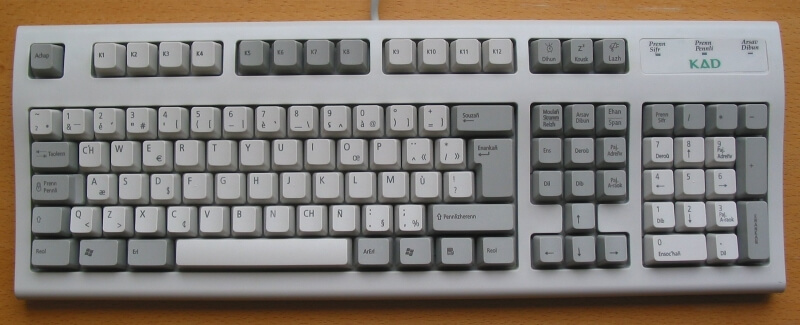
Let’s look at one more keyboard layout for French-speakers, shall we? It’s in the news because the government is getting some pressure to change the long-standing default, AZERTY. This layout came around in 2003 and is a keyboard built for those who speak Breton, a language spoken in parts of northwestern France. When comparing this layout with AZERTY, the A switches with the Breton letter C’H (similar in sound to the German ‘ch’) and Z swaps with W.

Is this what the future looks like? The Optimus Popularis was a ridiculously expensive, vaporware-esque, ultra-customizable keyboard. Who can shell out $1,500 for a keyboard anyway? Unless you type in multiple languages and regularly use unusual characters (calling mathematicians or musicians) it doesn't make sense. But it kind of existed, if you were ever lucky to see one.
Other examples of futuristic keyboard implementations include Lenovo's ThinkPad X1 Fold which uses a full size foldable display that can act as a keyboard. Razer's programmable buttons on their gaming laptops (they dropped the idea) and Apple MacBook's touch bar which utilizes an OLED touchscreen for contextual shortcuts. Power users hate it though, as there's no tactile response. Or how about no keyboard? Speech recognition keeps getting better over time thanks to AI.
Some say QWERTY is lagging behind -- and in non-English speaking countries, it's hard to ignore that QWERTY doesn't make the most sense -- but most people are too busy typing on whatever layout they're comfortable with to bother thinking about it. Just ask kids doing all the tapping on their flat phones.
Masthead credit: artophe via reddit
Previous:AMD Radeon RX 550 + Intel Pentium G4560
Next:Contingent No More
 NYT Strands hints, answers for May 5
NYT Strands hints, answers for May 5
 MacBook meets iPad meets iMac in this supercool new concept
MacBook meets iPad meets iMac in this supercool new concept
 Google Translate has a savage Easter egg calling out flat
Google Translate has a savage Easter egg calling out flat
 Scientists create the first 3D printed human corneas using 'bio
Scientists create the first 3D printed human corneas using 'bio
 Q&A with tendercare founder and CEO Shauna Sweeney
Q&A with tendercare founder and CEO Shauna Sweeney
 'Neon Advance' reminds us that some gadgets really can live forever
'Neon Advance' reminds us that some gadgets really can live forever
 IKEA backs out of Nashville store to focus on digital sales instead
IKEA backs out of Nashville store to focus on digital sales instead
 Amazon's 'Picnic at Hanging Rock' is hauntingly gorgeous: Review
Amazon's 'Picnic at Hanging Rock' is hauntingly gorgeous: Review
 'The Last of Us' Season 2, episode 4: Why Ellie sings 'Take on Me'
'The Last of Us' Season 2, episode 4: Why Ellie sings 'Take on Me'
 James Gunn and Mark Hamill finally had the epic coffee date we've all been waiting for
James Gunn and Mark Hamill finally had the epic coffee date we've all been waiting for
 The cicadas aren't invading the U.S.
The cicadas aren't invading the U.S.
 'Ibiza' is the perfect Netflix movie to kickstart your summer
'Ibiza' is the perfect Netflix movie to kickstart your summer
 Amazon's 'Picnic at Hanging Rock' is hauntingly gorgeous: Review
Amazon's 'Picnic at Hanging Rock' is hauntingly gorgeous: Review
 The latest ad from Samsung will break TVs to show off Ambient Mode
The latest ad from Samsung will break TVs to show off Ambient Mode
 Best Garmin deal: Save over $100 on Garmin Forerunner 955
Best Garmin deal: Save over $100 on Garmin Forerunner 955
 Amazon Echo Dot Kids review: Save your money and buy a regular Dot
Amazon Echo Dot Kids review: Save your money and buy a regular Dot
 Why summer is hell for people who wear glasses
Why summer is hell for people who wear glasses
 'Solo' had the biggest opening ever ... for a heist movie
'Solo' had the biggest opening ever ... for a heist movie
 The best day to book your flight, according to Google
The best day to book your flight, according to Google
 Alan Rickman wanted Snape to be more complicated in ' Harry Potter '
Alan Rickman wanted Snape to be more complicated in ' Harry Potter '
10 consistently great Twitter accounts to infuse your feed with joyYou can celebrate Groundhog Day with a $80 Cameo from Punxsutawney PhilThe harsh history behind the internet's favorite sea shantyBen Lerner’s “False Spring”Giant Mr. Darcy Terrorizes London, and Other News'Quordle' today: See each 'Quordle' answer and hints for July 1Bumble reinstates political filters after complaints from usersWhat We’re Loving: Tragedy, Poetry, Music by The Paris ReviewWhat We’re Loving: Quaker Meeting, Blue Trout, and the Call of the WildTPR vs. n+1: Vindication by Cody WiewandtTPR vs. n+1: Vindication by Cody WiewandtReddit bids farewell to thirdAfter Twitter banned Trump, misinfo on the site fell dramaticallyI Am Not Resigned! by Sadie SteinTwitter adds @SecondGentleman to official White House accountsSextech company reveals how COVIDFacebook might start bypassing Apple and Google's app stores in the EUSextech company reveals how COVIDThis Cat Is Clearly Illiterate by Sadie SteinObject Lessons: A Conversation with Christian Patterson by Rebecca Bengal A Downright Incantation by Sadie Stein Recapping Dante: Canto 7, or Hell by the Numbers by Alexander Aciman How the Magic Happens, and Other News by Sadie Stein F?!@#g Ohio by Sadie Stein People Are Angry, and Other News by Sadie Stein Netflix password sharing restrictions are now global Google Pixel owners report rampant app crashing Seeing Is Believing by Sadie Stein Prince Harry joins the U.S. work force to...fight misinformation? Maude Drop vibrator review: Affordable sex toy with serious power Gimme Shelter by Sadie Stein Wordle today: Here's the answer and hints for July 19 Microsoft announces Bing Chat for business with built Reddit relaunched r/Place public art canvas. Redditors immediately protest on it. The Book Thieves, and Other News by Sadie Stein 'Quordle' today: See each 'Quordle' answer and hints for July 20 An American in Paris by Sadie Stein Could two planets share an orbit? This may be a first. Dave Jorgenson chats about life as the Washington Post TikTok guy, his love of Spam, and more How to watch the Premier League Summer Series: The best streaming deals to tune in live
2.7456s , 10179.5234375 kb
Copyright © 2025 Powered by 【Watch An Enticing Invitation Online】,Feast Information Network